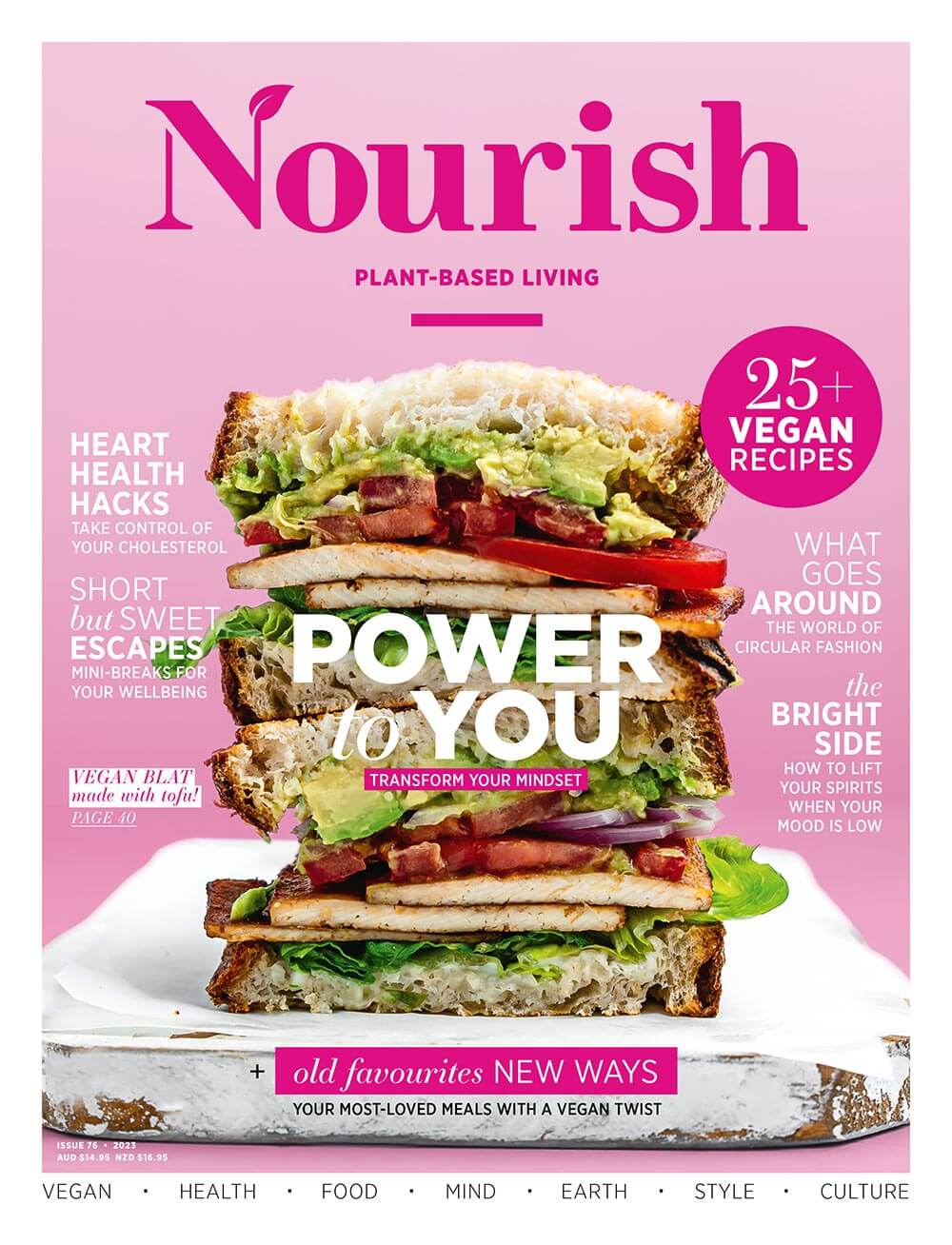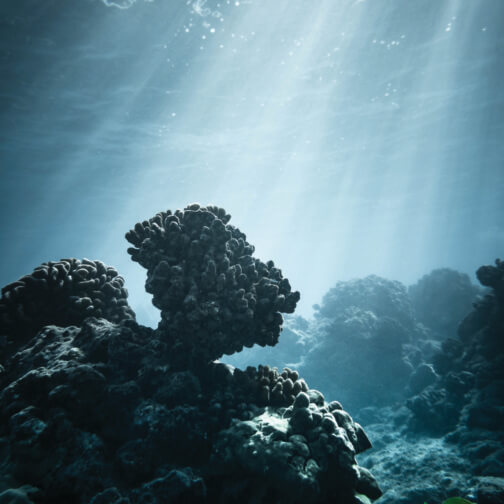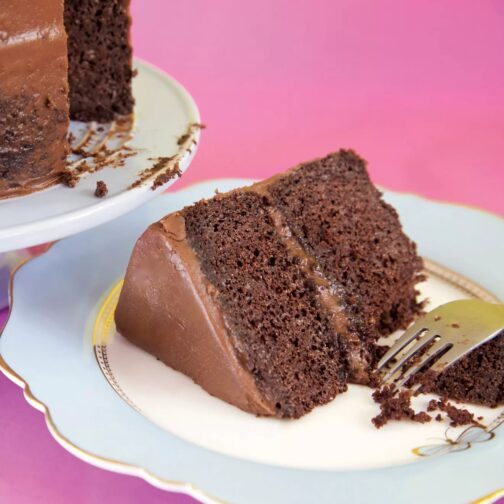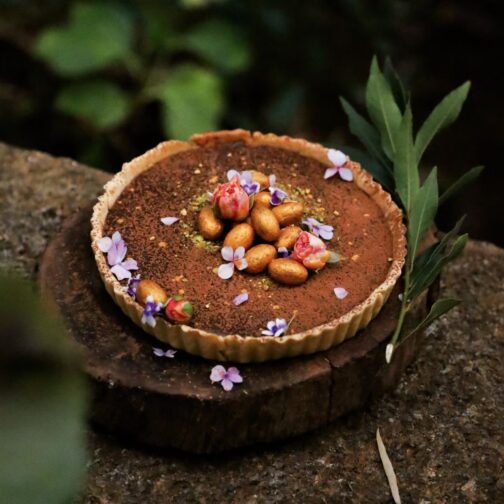More inspiring stories
Mindful escapes with Billabong Retreat
In the fast-paced and demanding world we live in, finding moments of stillness and calm can be challenging. In an attempt to find a little peace...
Mythbusting: Gut health
If you want to get your gut in order, Dr Will Bulsiewicz is the expert to help you sort out fact from fiction. This is the gut-health cheat sheet...
Plant-based recipe inspiration
Okonomiyaki
Okonomiyaki is a savoury pancake that is a popular street food from Osaka, Japan. It’s a favourite brunch for all who’ve tried it. You’ll...
Chocolate jaffa tart
Fake the bake with this delicious, decadent cake made with raw, whole ingredients.
Gluten-free chocolate cake
Now everyone can enjoy all the chocolate-y goodness of this classic favourite!
Macaroni ‘cheese’
Comfort food the whole family will love, this veggie-loaded macaroni ‘cheese’ is simply divine and super healthy too!
Chocolate and bay tart
This exquisite tart infuses the soft sweet flavour of bay leaves through its silky chocolate filling. Bay leaves are a traditional symbol of...
Artichoke pizza focaccia
In this easy focaccia, artichoke hearts go beautifully with the complementary flavours of tomato, olive, and rosemary. It’s delicious straight...
Smoky roast pumpkin pastry wreath with black olive tapenade
Roasted vegetables in smoky spices form the centre of this crispy puff pastry shell, along with a salty olive tapenade. Shaped into a...
More inspiration from our mindful collective
Natural sleep oils
Spraying sheets and pillows with calming scents can be a wonderful aid to slumber
To wander with no purpose
The next time you go for a walk, discover the wonder of the everyday world around you
Let it glow
A skincare routine can be a way to nourish yourself inside and out
Seeking the silver lining
When the clouds converge, practise gratitude for the smallest of glimmers, and learn to dance in the rain.
Plenty of fish in the sea?
Is there an ocean conspiracy going on? It’s certainly what everyone is talking about. Here are the facts on industrial fishing that many of us have only recently learned.
Since the 1950s, industrial-scale fishing fleets have roamed the world’s oceans pursuing fish, spurred on by never-ending demand. But over-fishing, illegal fishing, and damage to reefs have followed in their wake.
The multibillion-dollar commercial fishing industry has been depleting fish populations around the planet for decades, driving many species toward extinction. Scientists estimate the fishing industry kills almost two trillion wild fish worldwide every year! This is just another strain on our fragile oceans and waterways that are already polluted from oil spills, agricultural runoff, and huge amounts of garbage.
Commercial fishing is done for profit. One analysis valued the global market at around $240.99 billion in 2017, and anticipates growth to $438.59 billion by 2026. It’s an eye-watering amount of money. But what does our fishing industry actually cost us?
THE BIG CATCH
Sure, there are plenty of fish in the sea … but kill too many, too quickly and even fish will run out. As it stands, almost 30 percent of the world’s fish stocks are already over exploited. And what we might not be aware of is that wherever there is fishing, there is by-catch.
By-catch is the incidental capture of species such as dolphins, marine turtles, and seabirds. Thousands of miles of nets and lines are set in the world’s oceans every day and fishing gear, often undetectable by sight and extremely strong, is very efficient at catching the desired fish species – as well as anything else in its path.
While most of us have seen campaigns that aim to rid our oceans of plastics, few of us realise discarded plastic fishing equipment, dubbed ‘ghost gear’, makes up a staggering 85 percent or more of plastic pollution on the sea floor. Fishing nets lost, abandoned, or discarded at sea can continue killing indiscriminately for decades, entangling or suffocating countless fish, sharks, whales, dolphins, sea turtles, seals, and marine birds. Organisations like Sea Shepherd have an ongoing campaign that uses small, fast boats and divers to remove hazardous ghost nets and other abandoned fishing gear from coastal areas around the world.
EVER HEARD OF OCEAN DEFORESTATION?
You’ve probably heard of bottom trawling, which involves fishing boats dragging giant nets across the ocean floor. These nets scrape up fish – plus anything else in their path – and wreak havoc on delicate ecosystems and ocean habitats. The United Nations estimates that up to 95 percent of global ocean damage is a direct result of bottom trawling. What we might not know is that it also causes mass deforestation of the ocean floor and has a devastating impact on climate change.
While it is well known that agricultural systems contribute at least one fifth of global carbon emissions caused by human activity, a troubling new report has revealed bottom trawling is responsible for one gigaton of carbon emissions a year – a higher annual total than (pre-pandemic) aviation emissions. The study, published by scientific journal Nature, details the carbon cost of bottom trawling and, according to calculations by the report’s 26 authors, not only does the practice contribute to climate change but it is also extremely damaging to ocean biodiversity. Lead author Enric Sala said it’s the “equivalent of ploughing an old-growth forest into the ground, over and over and over again until there is nothing left”. It matters because the ocean absorbs about a quarter of global CO2 emissions per year. Sadly, only seven percent of the ocean is protected.
Bottom trawling is also the least profitable method of harvesting the ocean’s bounty while producing the most carbon, according to a study published in Science Advances on the economics of fishing the high seas. At the front line of climate change, the ocean, coastlines, and coastal communities are being disproportionately impacted by increasing CO2 and other greenhouse gas emissions from human activities. Atmospheric warming is leading to the melting of inland glaciers and ice, causing rising sea levels.
CO2 emissions are also making the ocean more acidic, increasing vulnerability for marine life and ecosystems. Now, armed with the science along with the data, countries could conceivably put a halt to bottom trawling while selling the offsets to pay for marine protection.
HUMAN RIGHTS ABUSES AT SEA
Many of us don’t realise how serious human rights issues are in the fishing industry or how many people are affected – many enslaved or even murdered. Nearly 40 percent of the global industrial seafood catch comes from fleets that exploit workers through modern slavery practices, according to new research published as part of an international collaboration between Minderoo Foundation, the University of Western Australia, and the University of British Columbia.
Hagar Australia Executive Director Merewyn Foran said, “Often young boys, who are undocumented in certain jurisdictions, are tricked into working on fishing boats, with a promise for a ‘better life’. Little do they realise they have signed up for a life at sea for many months at a time, working under abusive conditions.” Hagar remains dedicated to ensuring survivors of slavery, such as these young boys, are given the opportunity to restore and rebuild their lives and reintegrate into their communities.
SUSTAINABLE SEAFOOD IS A SCAM
Food fraud occurs when food products are sold with misleading labels. The international trade and price variability of fish provides ample temptation to would-be fraudsters and, as a result, lower value fish are sometimes substituted for higher value species. The Marine Stewardship Council (MSC) was founded to address challenges such as fraud in fish labelling, encouraging fisheries to verify their sustainability through MSC certification.
The MSC says the ‘sustainable’ label means fishermen caught the fish with methods that don’t deplete the supply. But a study in the journal Biological Conservation claims that when consumers want sustainable fish there are just two options to meet this demand: fisheries become more sustainable or the definition of sustainable is watered down to be practically meaningless. With MSC-certified seafood, “the definition has been repeatedly watered down”, says Jennifer Jacquet, a New York University environmental studies program professor and one of the study’s authors.
‘Sustainable’ gets whacked on everything from fabric to furniture to fish and implies that the manufacturing process doesn’t harm the environment or devour precious natural resources. This false labelling process is known as ‘greenwashing’ and takes away from consumers’ ability to effect change by choosing products that have a lower environmental impact.
No longer blinded by the greenwash, we can take a proactive approach: read labels, make educated decisions, and check ingredient lists. And, if that’s all too bamboozling, many believe the best way to sustain our oceans and their resident fishes is to avoid eating fish altogether.
More inspiring stories
Mythbusting: Gut health
If you want to get your gut in order, Dr Will Bulsiewicz is the expert to help you sort out fact from fiction. This is the gut-health cheat sheet...
Mindful escapes with Billabong Retreat
In the fast-paced and demanding world we live in, finding moments of stillness and calm can be challenging. In an attempt to find a little peace...
More inspiration from our mindful collective
Natural sleep oils
Spraying sheets and pillows with calming scents can be a wonderful aid to slumber
To wander with no purpose
The next time you go for a walk, discover the wonder of the everyday world around you
Let it glow
A skincare routine can be a way to nourish yourself inside and out
Seeking the silver lining
When the clouds converge, practise gratitude for the smallest of glimmers, and learn to dance in the rain.























